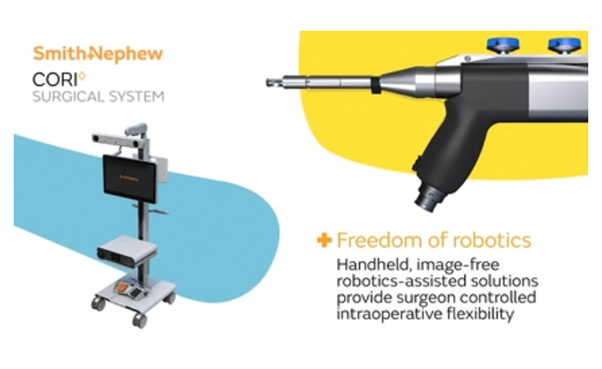
CORI Robotic System
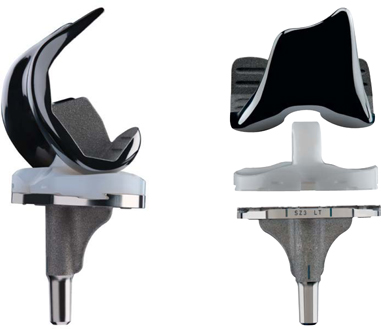
The Journey 2 BCS Knee – designed to restore a more normal feeling joint.
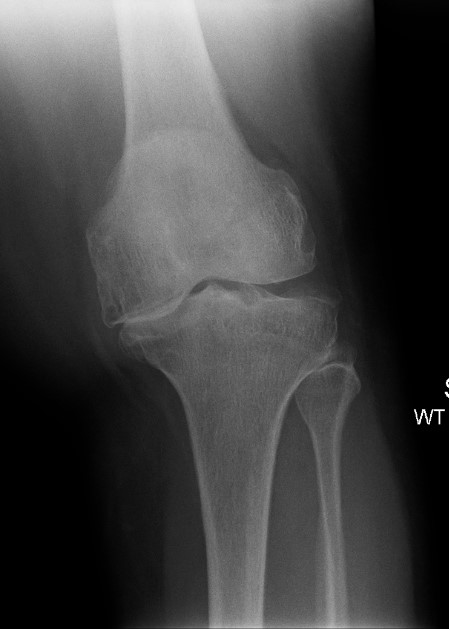
Arthritic Left Knee with loss of cartilage and deformity before replacement surgery.
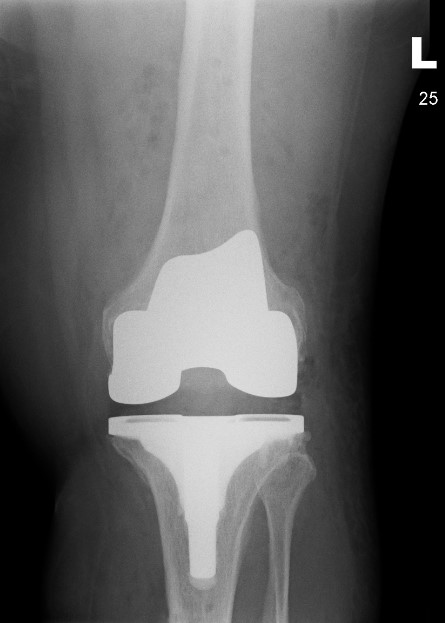
After Knee replacement, the joint is restored to its original position and the deformity is corrected with the knee now straightened.
Robotic Total Knee Replacement
Traditional Total Knee Replacement
Knee replacement surgery involves removing the damaged joint surfaces (i.e. the worn cartilage and bone), and replacing them with artificial joint components.
In the past, the surgeon would make a big incision down the front of the knee, and then use tools to estimate size and position of the joint before cutting away the damaged bone and cartilage.
Much like a tailor cutting cloth using a pattern, this traditional technique relies on tools, good placement and surgical skill, but it has its limitations.
The problem with total knee replacements carried out in this traditional manner, has always been the accuracy of placement of the components. If they’re not perfectly aligned, they have a tendency to wear faster and have been associated with less desirable outcomes, such as pain and stiffness. It is also difficult to balance the ligaments around your knee if the bones are cut inaccurately.
Robotic Knee Replacement Surgery – a huge step forward
Robotic surgery has greatly advanced what we can achieve at the time of a total knee replacement.
The robot allows pinpoint accuracy in measurement and placement of the new joint minimising the amount of bone removed, ensuring the replacement components will fit beautifully.
A special probe is used to create a 3D real-time model, removing the need for a CT scan and reducing exposure to X-rays.
Ligaments are balanced accurately to make the knee feel more natural once you’ve healed.
I am one of the leading experts in robotic assisted knee replacement surgery, and I help guide international research groups in Europe, the Middle East, and Africa.
I am a member of the Computer Assisted Orthopaedic Surgical Association, which is part of the British Orthopaedic Association.
Improving Outcomes
Less soft tissue trauma.
Less bleeding during surgery.
Faster surgery and recovery.
More accurate implant positioning – more chance of joint lasting longer up to 25 years or more.
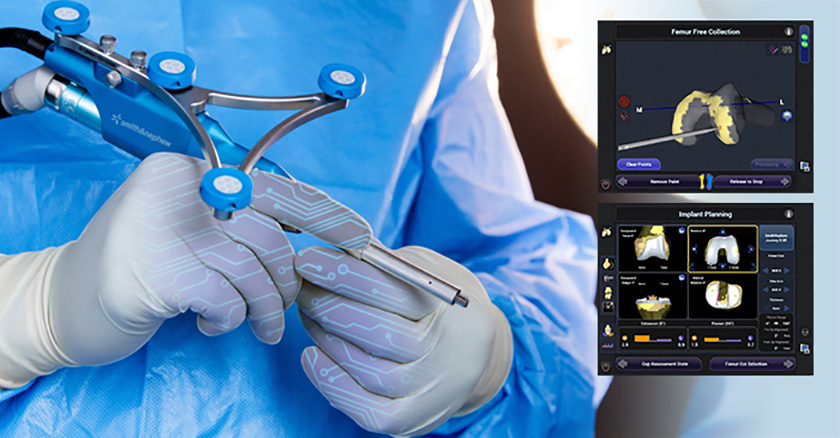
NAVIO Robotic System

The Journey 2 BCS Knee – designed to restore a more normal feeling joint.

Arthritic Left Knee with loss of cartilage and deformity before replacement surgery.

After Knee replacement, the joint is restored to its original position and the deformity is corrected with the knee now straightened.






